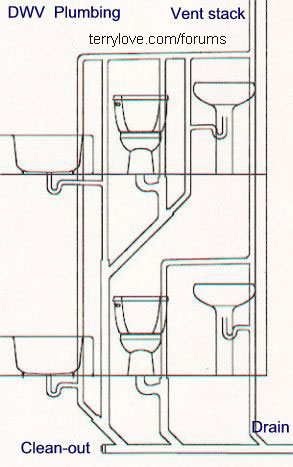Helpful Plumbing Hints for Residential Construction by Bert Polk Plumbing Inspector Lincoln County
States that use the UPC
Alaska UPC adopted at State level but IPC in use locally
Arizona UPC adopted at State level but IPC in use locally
California UPC applicable Statewide
Colorado UPC adopted at State level but IPC in use locally
Hawaii UPC, with local ammendments.
Indiana UPC base document for State code
Iowa UPC effective Statewide, IPC adopted by Local Governments
Kansas UPC adopted at State level but IPC in use locally
Kentucky code
Minnesota UPC effective Statewide UPC Minnesota
Missouri TBD either IPC or UPC effective Statewide
Montana UPC effective Statewide
Nebraska UPC adopted at State level but IPC in use locally
Nevada UPC adopted at State level but IPC in use locally
New Mexico UPC adopted at State level but IPC in use locally
North Dakota UPC effective Statewide
Oregon UPC effective Statewide
South Dakota UPC 2003 version effective Statewide
US Virgin Is. UPC Island wide
Washington UPC effective Statewide, with amendments
Wisconsin Plumbing Code Link
Wyoming Both IPC & UPC used by Local Governments

States that use the UPC
Alaska UPC adopted at State level but IPC in use locally
Arizona UPC adopted at State level but IPC in use locally
California UPC applicable Statewide
Colorado UPC adopted at State level but IPC in use locally
Hawaii UPC, with local ammendments.
Indiana UPC base document for State code
Iowa UPC effective Statewide, IPC adopted by Local Governments
Kansas UPC adopted at State level but IPC in use locally
Kentucky code
Minnesota UPC effective Statewide UPC Minnesota
Missouri TBD either IPC or UPC effective Statewide
Montana UPC effective Statewide
Nebraska UPC adopted at State level but IPC in use locally
Nevada UPC adopted at State level but IPC in use locally
New Mexico UPC adopted at State level but IPC in use locally
North Dakota UPC effective Statewide
Oregon UPC effective Statewide
South Dakota UPC 2003 version effective Statewide
US Virgin Is. UPC Island wide
Washington UPC effective Statewide, with amendments
Wisconsin Plumbing Code Link
Wyoming Both IPC & UPC used by Local Governments

Last edited:
